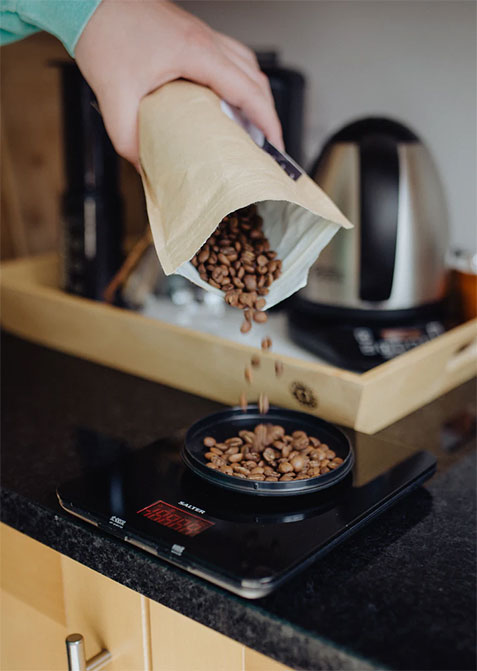What is and what is the "valve" of coffee packaging?

A small accessory, necessary for the shelf life of our favorite coffee.
Many times, those who start their steps in the magical world of coffee, feel the packaging of their blend in a strange way, especially if they have chosen coffee in beans. On either the top or the bottom of the package, there is usually a hard plastic object that looks like a valve.
Let's get a little better acquainted with the coffee valve, its functions and usefulness, and how it affects the quality and durability of our coffee!
What happens after roasting coffee?
To make ready-to-use coffee, the "green" (raw) coffee beans need to be roasted for a few minutes on high heat. The coffee beans, immediately after roasting, are full of gases, mainly carbon dioxide. For this reason, coffee beans are not packaged immediately after roasting, but left for a few days to eliminate carbon dioxide, in a process called degassing, or "degassing".
However, coffee bean gases are never completely eliminated. For some time after, the granules continue to emit carbon dioxide. In the case of packaged coffee, the carbon dioxide must have a way of escaping, otherwise the packages would be in danger of breaking, due to the constantly expanding volume of gases.
 What is the role of the "valve" of coffee packaging?
What is the role of the "valve" of coffee packaging?
For the reason described above, most coffee packages have a special valve, which is necessary for the escape of carbon dioxide from the packaged coffee. Most of the time it is located at the bottom of the package, it is easily perceived by the eye and raises questions for those who are not familiar with coffee in beans and its packaging.
The valve is necessary for the escape of carbon dioxide, as if there was no escape route for the gases, the packages would swell dangerously, with the risk of many times even breaking. Also, having a drain valve offers more flexibility in the coffee packaging stage, as roasted coffee can be packaged almost instantly, without the need for extensive degassing. Thus, the coffee is packaged immediately, having come into minimal contact with oxygen, since carbon dioxide can be eliminated slowly and safely through its packaging.
Is there a case for our coffee to deteriorate due to the "valve"?
CO2 escape valves are always "one-way", which means that they allow carbon dioxide to escape from the package, while not allowing oxygen to enter. Contact with oxygen is the main reason for the deterioration of the taste of coffee, as contact with the outside air oxidizes the beans, changing their taste profile and reducing the taste and aroma.
It is a given that no alteration in the taste or aroma of coffee can occur due to the presence of a valve. If the coffee we bought is stored properly, the packaging is intact and has a valve, it is certain that its aroma and taste have remained as they were when packaged.
Due to the loss of CO2, there is a case that the packaging of our coffee is more or less "inflated". This has no practical significance nor does it affect the quality of the coffee. After all, due to the valve, the excess CO2 will sooner or later escape - this is also the function of the mechanism.
Technology advances and with simple means, such as a good package and the right valve, we can enjoy fresh and fragrant coffee with ease, as long as we choose for our purchases a reliable brand and a store that we trust.










